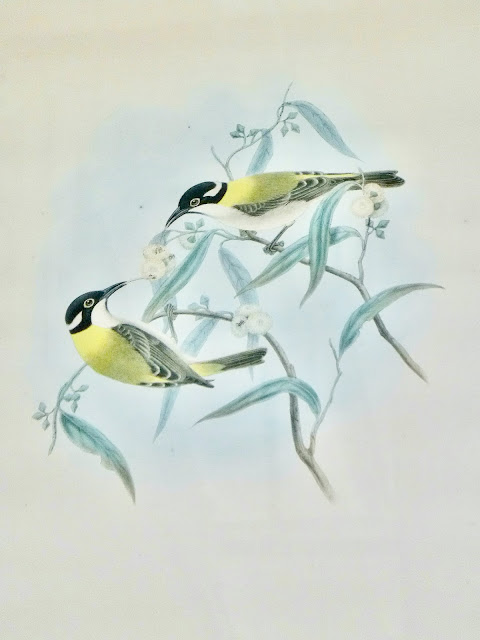This lovely hand-colored lithograph is by noted English naturalist, ornithologist, and artist John Gould (1804-1881). Gould was the first curator of the Museum of the Zoological Society of London. As curator, he conferred with the country's leading naturalists and viewed new collections of birds donated to the society. In 1830 he published his first volume on birds, A Century of Birds from the Himalaya Mountains. Over the next fifty years, Gould, his wife, and a team of artists traveled around Asia, the East Indies, and Australia, documenting the native birds and animals. This lithograph, picturing a pair of beautiful honeyeaters (Melithreptus Loetior), is from Gould's final work, Birds of New Guinea and the Adjacent Papuan Islands, Including Many New Species Recently Discovered in Australia.
Gould's images are renown for their rich colors, animated composition, and naturalistic backgrounds.
A close inspection reveals many delightful details, such as tiny insects feeding on the flowers.
All posted items are for sale at Next-to-New, but things can sell quickly!
14337-627


















